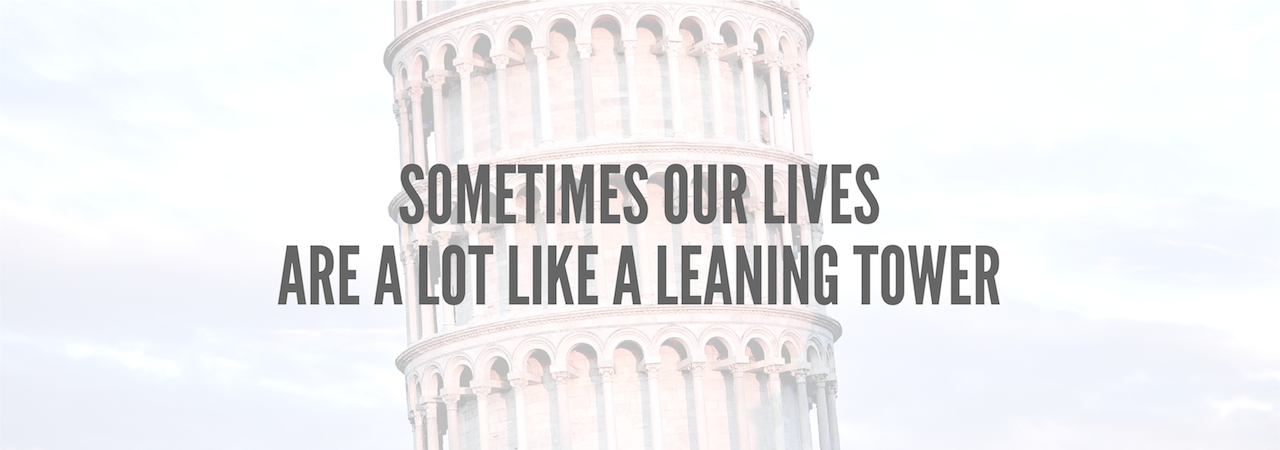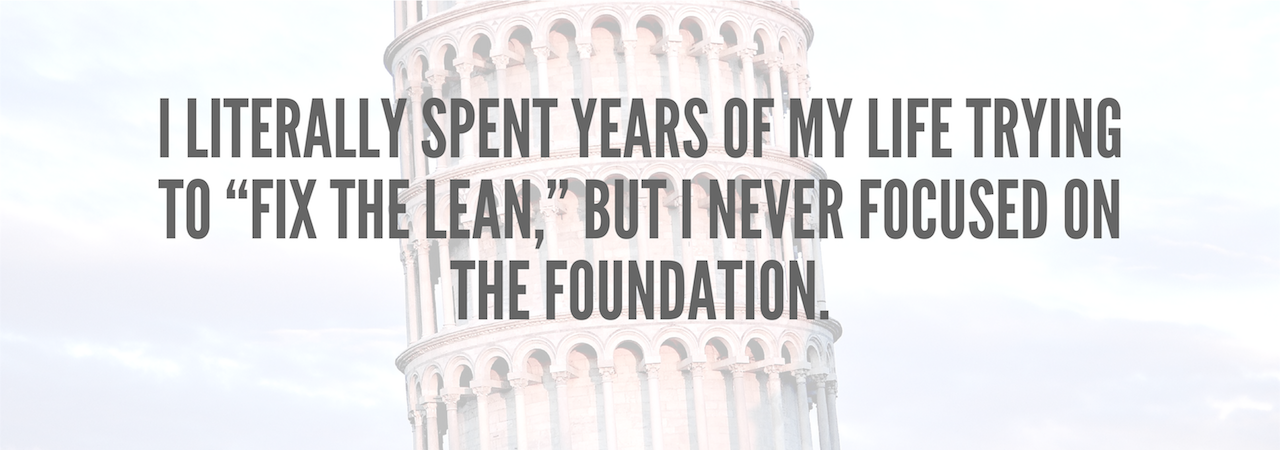FIXING THE LEAN
/A few years ago, I was in a strategy meeting for a project I was working on, and the question was asked - which of these two buildings are we building? I barely remember what the project was about, but I remember the question. It stuck in my mind because it made me think about the way we put together the lives we build.
The other day I was reminded of this as I was thinking about how grateful I am that, despite our best efforts to mess things up, God so often holds us up even when we are ready to collapse under the weight of our own brokenness.
The difference is pretty clear. On the left - the leaning tower of Pisa. It is a beautiful work of art, sure enough, but it's famous for one reason alone - it’s leaning. Or more precisely, it’s falling over. If it wasn't, it would just be some unknown, pretty tower. Sure, through technology, we're slowing down the inevitable, but because of it's poor foundation, it's falling over after just a few hundred years.
On the right, the Pyramid of Giza. For most of modern history, this was the tallest man-made structure on earth. It has lasted THOUSANDS of years, and has withstood earthquakes. We don't know know exactly who built it, or how, but yet it stands firm. It's foundation is solid - even as it rests in the sand of the desert.
The Pyramids aren't nearly as sexy as the tower. They are boring. Italian architecture is far more appealing, and "artistic" than the granite monument — which were built mostly as tombs. The tower was built as a work of art. It is made of marble and took over 177 years to construct. Yes, the tower took 177 years.
There were several reasons the tower took so long, including even a few wars, but one of them is because from the time they started construction, it began to sink. It was a painstaking labor, yet all that work is in jeopardy because it's foundation is too shallow, and too soft. Today, over 800 tons of lead counterweights are used to stabilize the tower, and the best estimate is that it “should” be stable for about 200 years.
The Pyramid, in comparison, was built in 20 years. It's foundation goes deep into the desert floor. It's base is wide, and it's purpose clear - to stand the test of time. To stand against whatever might come against it. It has stood for some 3,000 years, and will likely be there long after any of us are around.
The pyramid was build to last. Forever.
Sometimes I think our lives are a lot like a leaning tower. We focus on building something that looks good on the outside, yet our foundation is too shallow. I guess the question is - what are you really trying to build?
There's a passage of scripture, where Jesus is talking to His followers about people who know what they're supposed to be doing, but don't do. He tells them, "why do you call me Lord, Lord, and not do what I tell you?"
He goes on to describe two different types of people. Both have heard what Jesus has said, but it's their response that matters. It's what they do with it in their life that is really the point here. In Jesus' words:
"As for everyone who comes to me and hears my words and puts them into practice, I will show you what they are like. They are like a man building a house, who dug down deep and laid the foundation on rock. When a flood came, the torrent struck that house but could not shake it, because it was well built. But the one who hears my words and does not put them into practice is like a man who built a house on the ground without a foundation. The moment the torrent struck that house, it collapsed and its destruction was complete.”
(Luke 6:47-49)
So, again, what kind of foundation are you building on? Are you building something that will last? Is my foundation deep and wide, or is it shallow and soft? As a result, will my life be a blessing to my family for generations to come? What about to those around me? To my church? To the kingdom of God?
For a long time, I had been building a life a lot like that tower. On the outside, at least, things looked good. I had a great facade, and I worked hard to keep it propped up. At the same time, my foundation was shallow, and built on too many things of this world - like pride, fear, selfishness, and shame. I spent a lot of time trying to “prop” up this life, and the results were devastating. I literally spent years of my life trying to “fix the lean,” but I never focused on the foundation.
If the builders of the Tower of Pisa had paid a few meters attention to the foundation during construction, they could have saved 1,000 years of propping the tower up. Amazingly, the same thing is true for us. A little more attention paid to where we plant the foundation of our lives could save a lot of repair work later - a lot of fixing the lean.
I speak from personal experience here, and if I can help anyone avoid the pain of trying to rebuild a life on the edge of falling over, then let me encourage you to think about the life you’re building.
It's easy to deceive ourselves, because just a little lean is barely noticeable at the foundation. The tower of Pisa leans roughly 4 degrees. You wouldn't even know at ground level - but by the time it reaches the top, it's off center by 5 meters.
But let's get real for a minute. Every time we find ourselves absorbed in how many likes or retweets or social media followers we have, we're leaning just a little more. When we base our decisions on what our neighbors or co-workers or people we don't even really know, or like, might think about us, we're leaning.
Every time we trade in our values or our integrity for the thing that makes us "look good" now, we're leaning. When we shade the truth, or leave things out, we're leaning. When we fail to model the type of people we want our children to become, we're leaning. When we lash out in anger, instead of grace, we're leaning. Eventually, we end up leaning so far, we fall over.
As a general rule, when things fall over, they often break. And when things break, someone often gets hurt. I don’t want my life to be the reason someone gets hurt. Not me, not my kids, not my wife, not anyone.
I used to be pretty focused on constantly trying to fix the lean, to prop up the facade. Now, I’m much more interested in building life on a deep and wide foundation. At times, it may not look as exciting, but there are too many people counting on me to build a life that lasts.
What do you think? Leave a comment below and let me know what you’re doing to build a life on a foundation that lasts.
This was first posted back in 2010, but I think it's just as relevant today. I've updated it, and adjusted the focus, but the idea is the same. It's also been shared in a few other places, but sometimes a reminder is just as helpful as hearing something for the first time!






